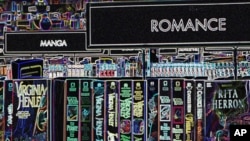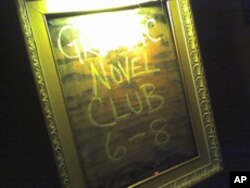In a recent Washington Post story, Michael Dirda described young people sprawled on the floor at bookstores, their eyes riveted on the books in front of them. In fact, Dirda wrote, no other readers look quite so utterly absorbed.
The books belonged to a hot but, until recently, somewhat obscure genre that many Americans have never heard of.
It's the graphic novel. And the graphic part has nothing to do with explicit written descriptions of people, places, acts, or events. It refers to the illustrations, or graphics, that, in this form of book, carry the story as much as, or more than, the words.
Graphic novels - whose format has been traced all the way back to medieval woodcuts and to adult 19th Century Japanese illustrated stories called manga - look a lot like comic strips in book form. But each volume tells a full and complex story.
Graphic novels are mocked in some literary quarters as simplistic - another example of what some consider the dumbing down of the American culture.
Writer Alan Moore, for instance, scoffs that graphic novel is nothing but a marketing term . . . meaning 'expensive comic book.'
That's an interesting take, since Moore is himself a British comic-book writer.








